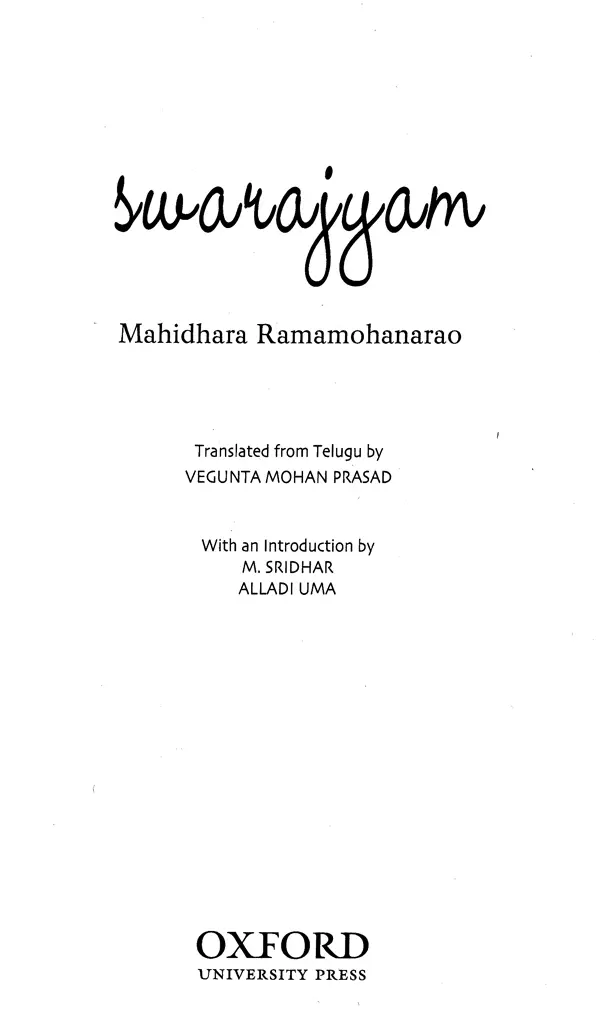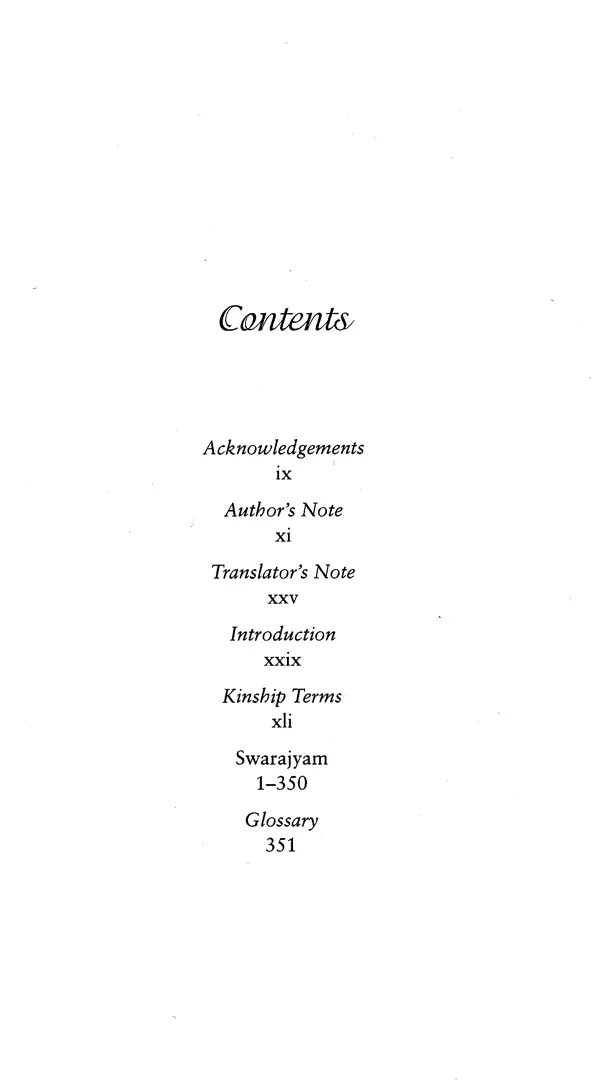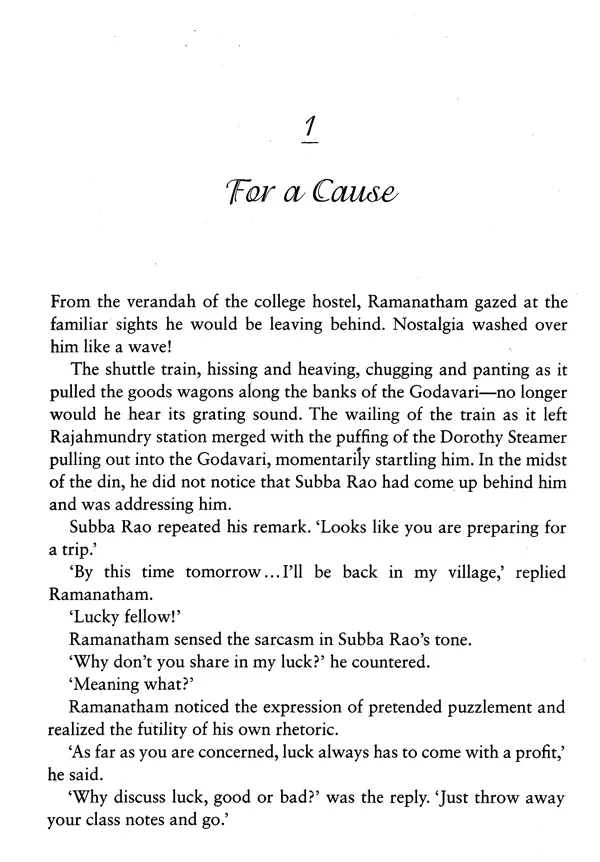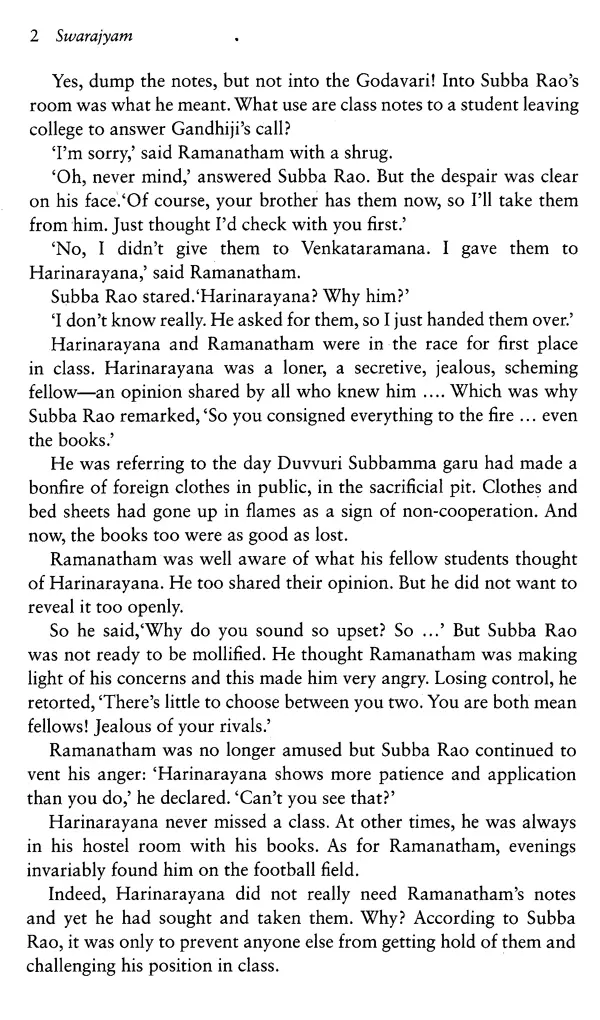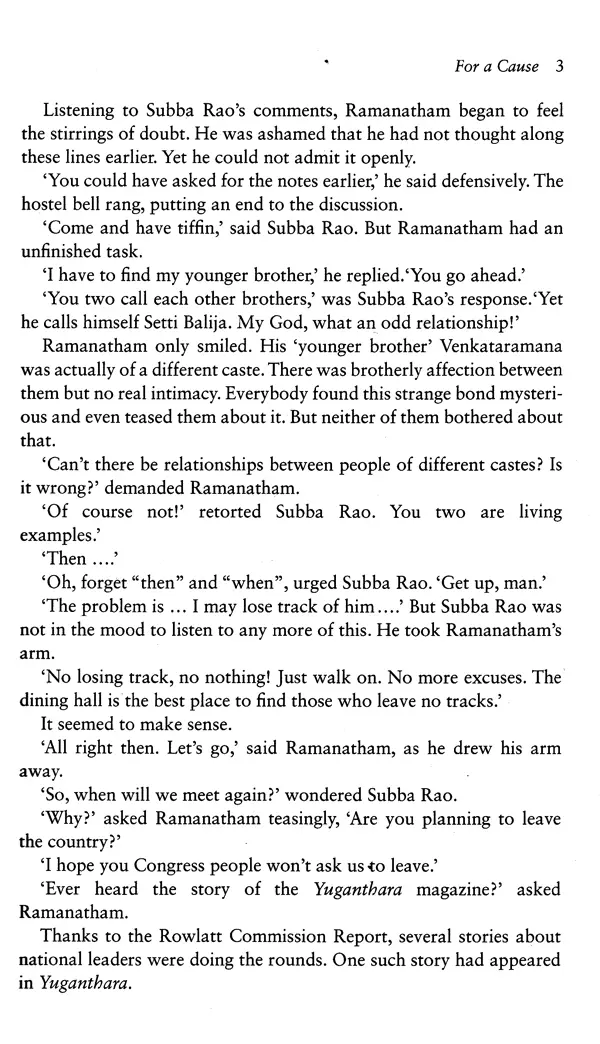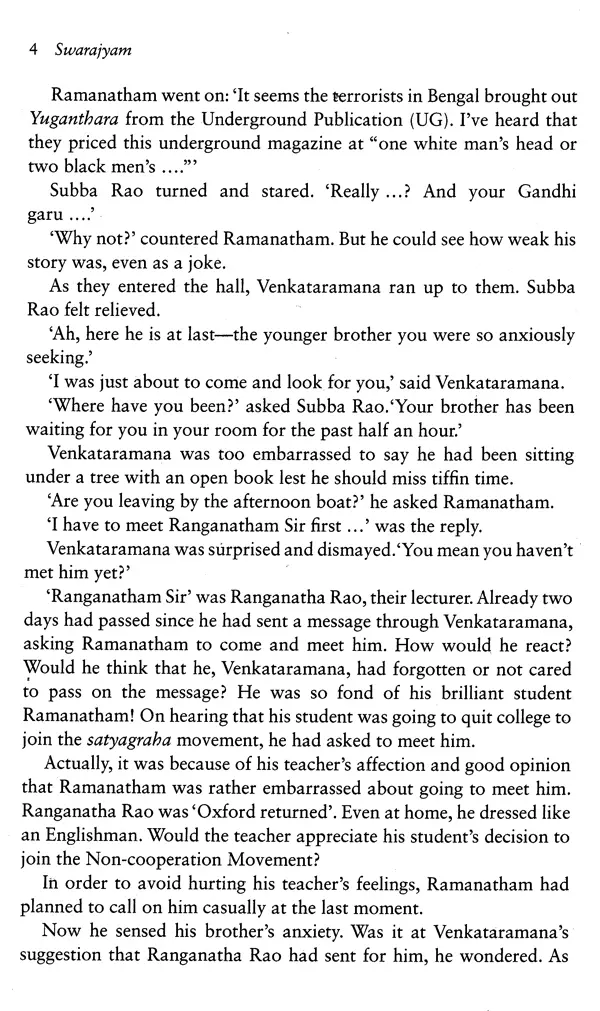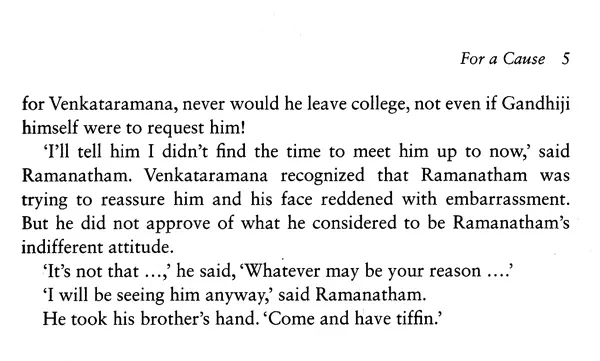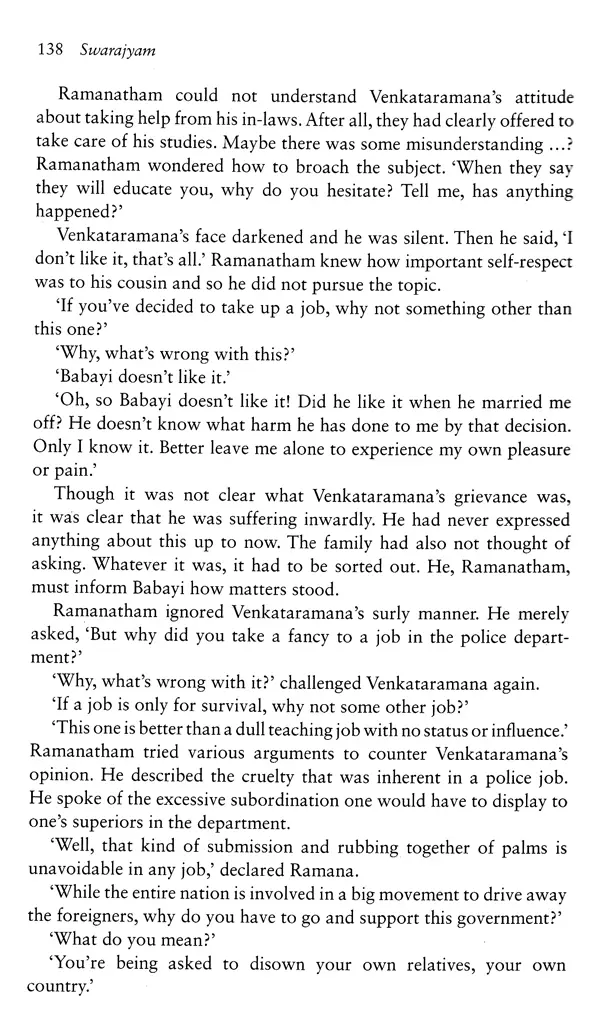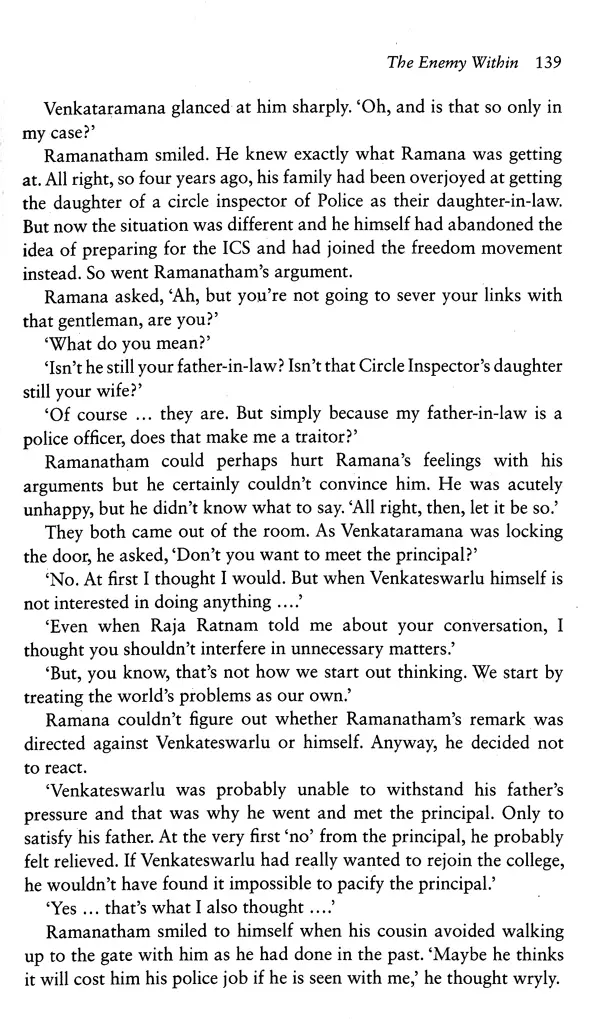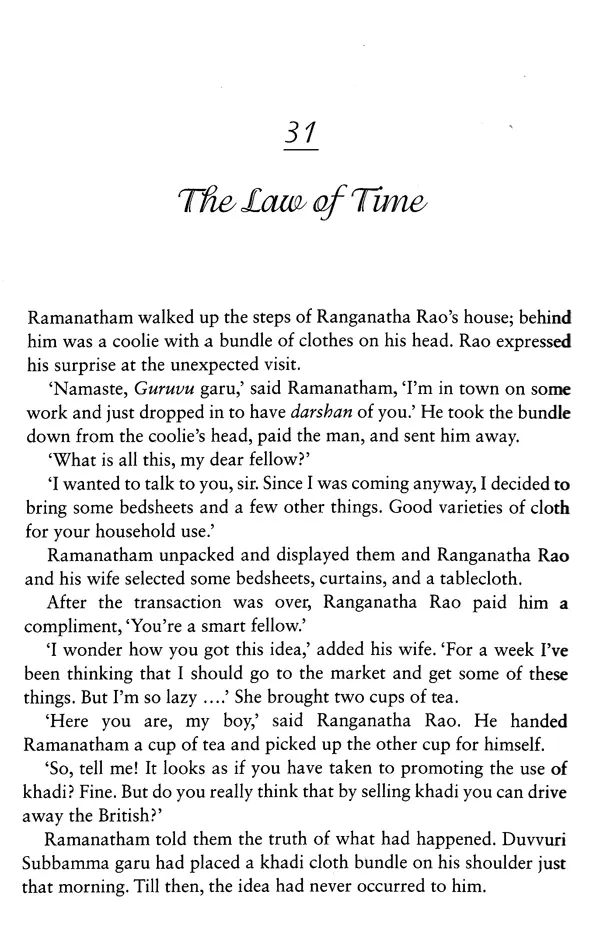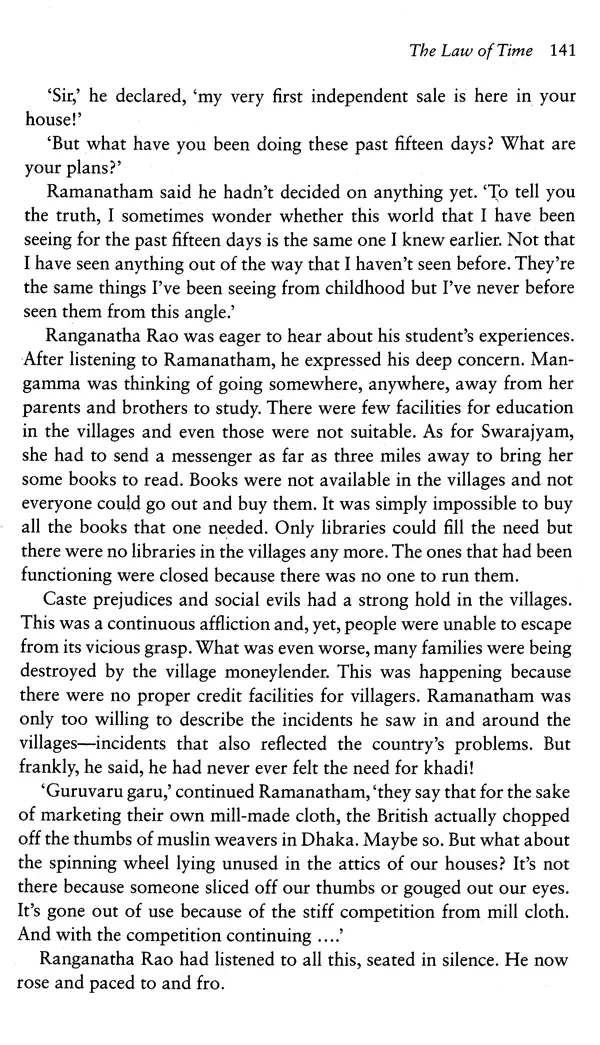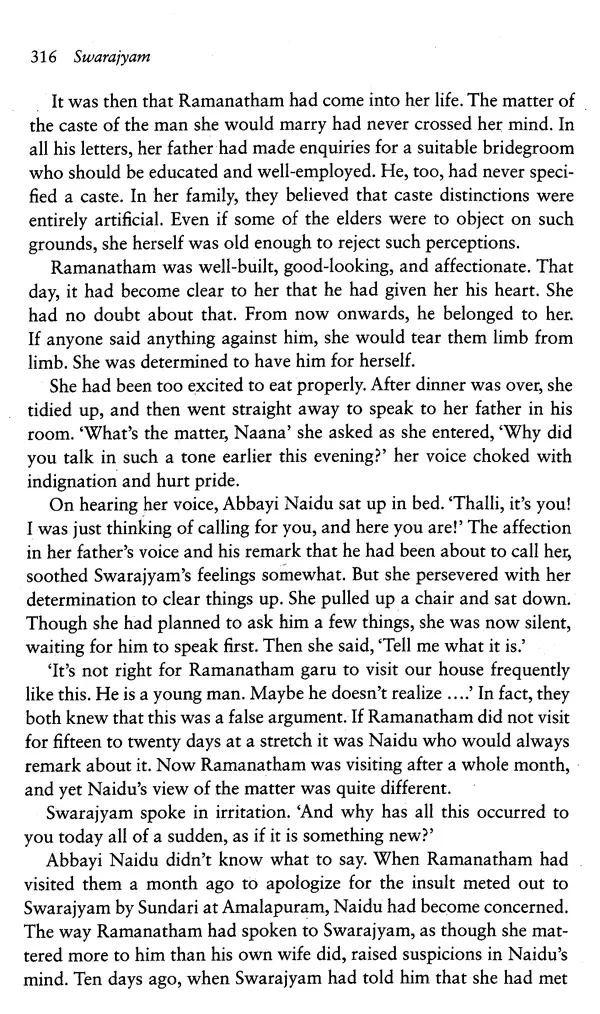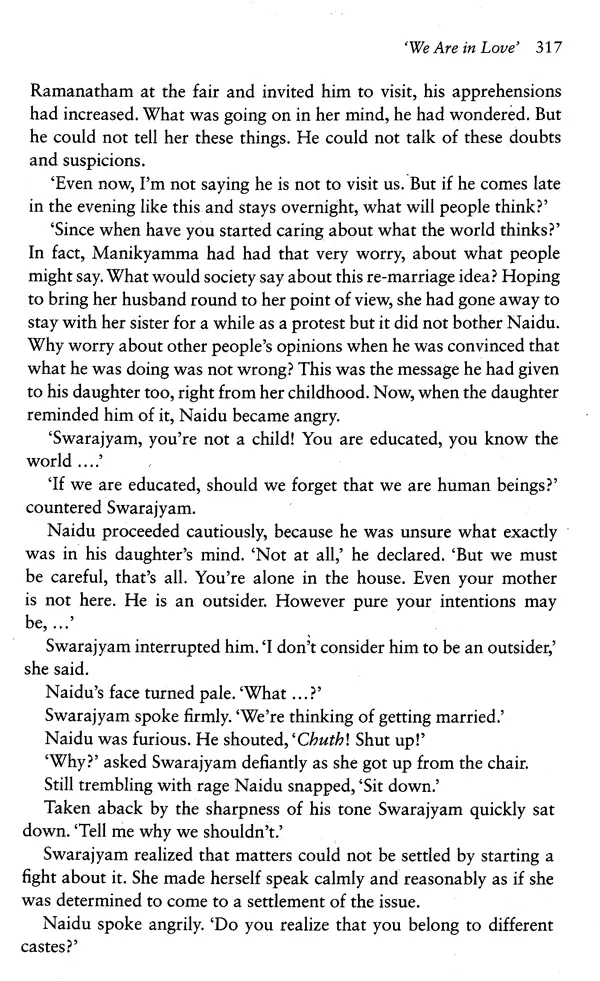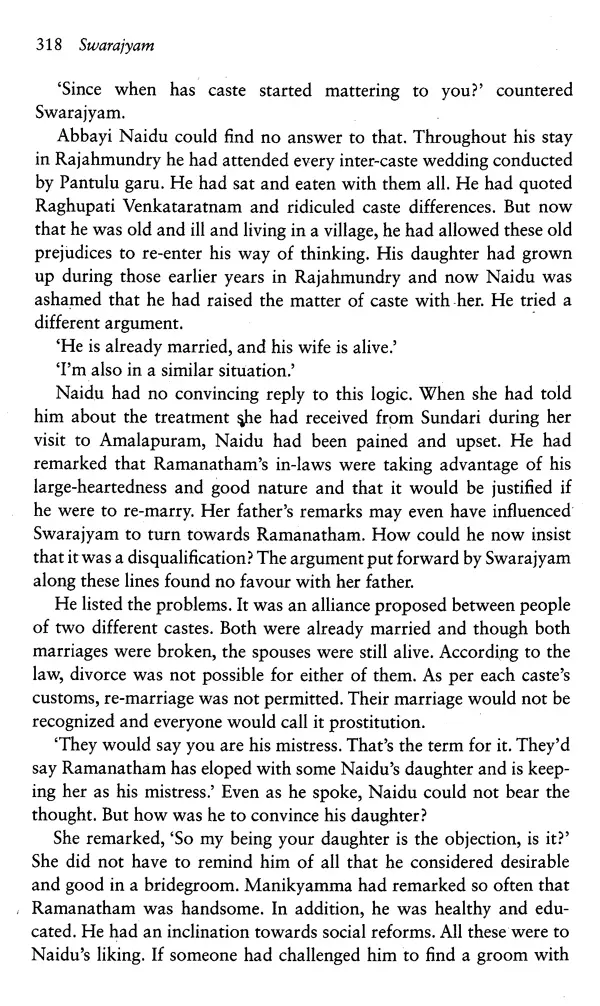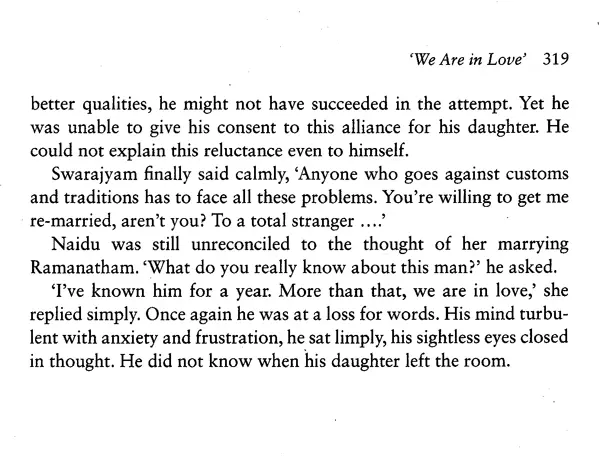
Swarajyam
Book Specification
| Item Code: | UBE738 |
| Author: | Mahindhara Ramamohanarao |
| Publisher: | Oxford University Press |
| Language: | English |
| Edition: | 2012 |
| ISBN: | 9780198077374 |
| Pages: | 400 |
| Cover: | HARDCOVER |
| Other Details | 9.00 X 6.00 inch |
| Weight | 520 gm |
Book Description
It is 1921 and the ripples of the Freedom Movement have reached the quiet village of Munganda. The stage is set for the dramatis personae: an idealistic young Brahmin, Ramanatham, an admirer of Gandhi; an intelligent young woman, Swarajyam, who instinctively yearns for liberation from stifling social mores and discrimination; and a village with a full cast of characters who strive to cling to the past while being inevitably drawn into a very different future.
Munganda village is a microcosm of a newly resurgent India which is resonating with Gandhi's clarion call to act for political and social liberation. As the novel unfolds, we see Ramanatham battling his inner doubts while trying to spread Gandhi's message of change. We see Swarajyam, dutiful daughter and abandoned wife, who dares to be different. This is a novel set almost one hundred years ago; yet it remains relevant for its insights into human hopes and fears and its portrayal of the continual tussle between tradition and modernity, both in thought and choices.
The Introduction by M. Sridhar and Alladi Uma shows how Swarajyam holds a special significance for the country more than forty years after the publication of the Telugu original, which received the prestigious Andhra Pradesh Sahitya Akademi Award in 1969. This first-time English translation will appeal to students and teachers of Indian writing, comparative literature, and translation, gender, and cultural studies.
(1909-2000) was born in Munganda Agraharam in Konaseema of East Godavari district. Growing up in an environment of revolutionary fervor, he abandoned his studies and joined the Indian National Congress and later became a staunch advocate of Communism. Without formal schooling, he acquired scholarship in Telugu, Sanskrit, Hindi, Bengali, English, and Russian.
Telugu is spoken by a population of over 70 million in India and speakers of the language are the second largest linguistic group in the Indian Union. In 2008 the Union government accorded the status of 'classical language' to Telugu and Kannada. Only languages which have a proven antiquity of over 1,500 years qualify for this status. The other criteria for enjoying this status include the existence of a body of ancient literature and an original literary tradition rather than one borrowed from another language community. (The decision, however, is subject to the verdict of the Madras High Court on a writ petition pending before it.)
Recent research traces the first known Telugu word, nagabu, which could mean serpent, to the first century AD, during the period of the Satavahanas (200 BC to AD 250). Though Telugu might have been spoken in the early centuries of the first millennium, the existence of the first inscriptions (and therefore of the written script) is traced back to the first half of the sixth century. Literary histories, however, treat Nannaya of the eleventh century AD, as the Adikavi, the first poet, who is the joint author of the Telugu Mahabharata. Critics argue that there must have been literature prior to Nannaya for a literary work of such high order to have been produced in the eleventh century. Telugu literature prior to Nannaya, is found mainly as inscriptions
